Tony Hillerman isn't even an afterthought, nor are N. Scott Momaday nor Sherman Alexie. True to the noir series convention, the current iteration of Akashic's run of outstanding titles features fourteen writers--seven women, seven men--you may not yet have come across, and a few you have, but in other contexts. The pleasure, mostly, is all yours, in this case.
The most-published, and perhaps best known, writer in the collection is Lawrence Block. He's no Indian, attesting to the editors' decision to include stories featuring North American Indians in one way or another, rather than adding a stricture that the writer also must be an Indian.
That's a tough break for some India Indio writer looking for some ink by breaking into an "Indian" anthology. But then, some writers' or stories' conecta to Indiohood are tenuous. There's Mistina Bates, who declares herself the "great-great-grand-daughter of a full-blooded" Cherokee who served as a Texas Ranger. I bet family reunions were interesting in that familia. Then there's Block's story, "Getting Lucky," the oddest, most inappropriate selection in the anthology. It's a sex story featuring a con woman posing as a Yupper Indian who suckers a lucky gambler into an orgiastic tryst before scalping him alive. Plenty noir, but not at all "Indian." Tough break for that hungry writer whose place Block takes. Maybe it's a deliberate irony, the phony India and the usurping Anglo writer.
One of the more touching stories introduces Ira Hayes, as the old song goes, fighting drunken Ira Hayes. The Mt. Suribachi flag-raiser is on a war bonds tour in Chicago, in Liz Martínez' account near the close of the book. Hayes feels comfortable only when he hits the bar. The military has assigned a minder to ensure Hayes gets his drinks and stays out of too much trouble. And that's what goes down, until Hayes, in a drunken stupor has a flashback to hand-to-hand combat back on Iwo Jima. Unfortunately, his enemy is a Chicago cop, who ends up shot dead, along with an innocent bystander. It's a perfect crime.
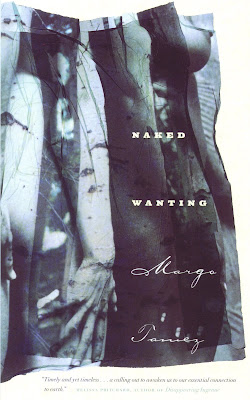

Here's my review of both Naked Wanting and Raven Eye. If you're looking for spun sugar literary confection, and easy comfort, move on. But if you want to encounter poetry that disturbs you in the best possible way, keeps you up at night, demands that you respond with your heart and your mind, read these books.
Margo Tamez is a poet whose work is not easy, clearly born of experience raw and real, making the reader touch that place of pain, of personal wounding far, far, away from the romance of the Southwest and the stereotype of the "stoic noble" on the rez. Her writing forces us to look where the bodies are buried, when we want to turn a blind eye to the violence wreaked upon the individual and environment. Both Naked Wanting and Raven Eye gave me that gnawing feeling in the pit of my stomach, the tight, clenched first buried in the chest. Bless her for that.
And bless her, too, for somehow still weaving threads of redemption and reemergence in the face of soul breaking sorrow, for offering real mythos and confronting false spirituality. But to put a finer point on it, read what others have written about this singular poet.
This book is a challenging cartography of colonialism, poverty, and issues of Native identity and demonstrates these as threats to the environment, both ecological and social, in the borderlands. Each poem is crafted as if it were a minute prayer, dense with compassion and unerring optimism. But the hope that Tamez serves is not blind. In poem after poem, she draws us into a space ruled by mythic symbolism and the ebb and flow of the landscape—a place where comfort is compromised and where we must work to relearn the nature of existence and the value of life. —Norman Dubie
Margo Tamez’s poetry is an emotional journey, and I find myself softly invoking a line from her book: ‘may the way be in peace.’ Read it; you’ll know what I mean! —Simon J. Ortiz
Margo Tamez’s poetry works like a heartsong, it makes us brave. Her alive response to what kills makes us want to stand up with her and sing in the face of the enemy. She shows how hard it is to fight oppression and reminds us what is at stake: living beauty. . . Margo Tamez’s call to battle both instills fear and thrills us. —Heidi E. Erdrich
xxxxxxxxxxxxxxxxxxxxxxxxxxxIn Naked Wanting, Tamez' lens tightly frames the direct links between miscarriages among indigenous women in the Mexico-U.S. borderlands and environmental racism, when damage inflicted on the environment by herbicides comes back to haunt us all at the level of women's reproduction. These are the bombs ticking within these astute and subtle lyrical narratives rendering the pierce of "the chemical cocktail seeping into the air ducts."
This poet speaks as someone who has experienced first-hand the body, literally re-structured by chemical invasions in air, water, soil and food, exposes the consequences and implications when our land and water are compromised.
For Margo Tamez, earth, food, and community are the essentials of life, our deepest wants, beyond human 'rights'--our responsibilities. She brings all of them together in these cautionary and lyrical poems that inspire us to move through compassion and, more concretely, to actions for a more sure footing on earth. Below is a sample that beautifully illustrates just that.
My Mother Returns to Calaboz"The Lower Rio Grande, known as the Seno Mexicano (the Mexican hollow or Recess), was a refuge for rebellious Indians from the Spanish presidios, who preferred outlawry to life under Spanish rule." -- Americo Paredes, With Pistol in his HandThe fragmented jawbones
and comblike teeth of seagulls
sometimes wash up from the gulf
to the levee of the river
and gather straited along the berms
where my grandfather irrigated sugarcane.
My mother, returned after forty years
working away from Calaboz,
walks there often now,
hassled by INS agents
when she jogs by the river
where her ancestors planted, hunted,
prayed and resisted invasions.
The INS think she runs away from them,
that she is an 'illegal', a 'savage'
'trespassing' from Mexico.
Used to the invasion,
she asks them how they assume,
how exactly do they know
if she came from here, or there?
When she tells me this story
she exaggeratedly points to the spot
she stands on (here) and the land
I stand on (there) which means:
you idiot...we indigenous don't recognize
your violent settler borders
I am an an indigenous woman,
born in El Calaboz, you understand?
she says loudly, in mixed Spanish and Lipan-Nahuatl,
and they tear out,
the truck wheels spinning furiously,
sand sprayed into the humid air.
When I was a girl walking on the levee with my grandfather,
I thought I saw gull teeth
chomping at the soil wall.
The air was dank steam,
the scent of sand, roots,
and something alive beneath the soil,
deeper and older than memory.
when I immersed my hand inside
the cloudy water,
it became a fluid form,
soft, something becoming,
something ancient.
The air is still heavy with heat and damp,
and smells like diesel and herbicides.
the scent reminds me of failed gestations.
My reproduction, the plants', and the water's,
each struggling in the same web of resistance
and survival.
When I was a girl, my grandfather taught me
to put a small clump of soil in my mouth,
and to swallow it. I watched him.
Then I did.
I used to watch the gliding and swerves
of uprooted reeds in the river's unhurried flow
to the Gulf.
I reached with all my body,
stomach on the bank of the levee,
hands and arms stretched out like an acrobat
to touch and grasp their slender stems.
Once, my feet pressed into the soupy bog,
and stepping up was heavy, yet with the sound of gurgles,
puckering, a mouth opening,
like seaweed and millennium of soil, my ancestors and water breathing.
Now, I think I'd like to be,
that I will be
running with my mother
when she tells of la migra.
Listen to the bubbling duet of water and plant life,
listen to the sound of grandmothers and grandfathers
closely.
Again and again.
This is a visceral longing for home, for
groundedness in the deepest and most literal sense. It reflects an abiding love for la
tierra, but not the convenient, fantasy laden Southwest. It is a personal, damaged homeland, smelling of chemicals, shot through with run-off that is still somehow, unquestionably sacred.
Tamez writes of border dwellers unbowed, unabsorbed, defiant, and ultimately triumphant---not noble, but stubbornly flawed and human.
xxxxxxxxxxxxxxxxxxxxxxxxxxx
In her second collection,
Raven Eye,
Tamez explores desire and the construction of indigenous identity, while imploring readers to unite against oppression in all its forms.
Written from thirteen years of journals, psychic and earthly, this poetry maps an uprising of a borderland indigenous woman battling forces of racism and sexual violence against Native women and children. This lyric collection breaks new ground, skillfully revealing an unseen narrative of resistance on the Mexico–U.S. border. A powerful blend of the oral and long poem, and speaking into the realm of global movements, these poems explore environmental injustice,
sexualized violence, and indigenous women’s lives.
Ceremony of Peyote
A snakebird sinuous dim form silhouetted
On the porchroof of the hogan--
Comes out of a monsoon sky
Banded thickly red and flint
Snakebird in me curves slowly
Over my bed
the sinew of what can't be said
Nine months full of ocean and yolk
Scents of beautifully made starmatter
A smell of tongue and lip
Of moisture a scent of Snaketown's Gila clay
I'm a brown and black puddle a scent I know
____
You spent hours in the heat of midday fidgeting with rage
I'm unpredictable not the kind of Indian you can present to
Men all wrapped up behind panIndian shawls eagle fans
Who never bring their women to pray
Whose diabetic eyes devour
My pregnant belly
Full of a bird boy raven boy
Ripe with beautiful worlds
Corn meat and berries
You say the order
Morning food for the relatives always like that you say
The look in your eyes don't mess up don't embarrass me
don't talk too long when you pray for the water
Can't risk my prayers to the morning star
Risk what I can say about
This medicine a Mexican Indian woman brought
North got Christianized by subjugated men
My morning prayers only suitable
For waterbirds
Anhingas and herons
Not men or women
In shawls
Fanning and chanting
In chorus of what they deny
My body
The yolks of my body
Stories we must tell to undo
What has been done
There is no easy, pro
forma way to reconnect, no perfect prayer that can be prayed. Colonialism and racism have taken their tolls both in daily life and spiritual practice. But this poem reclaims and
reframes ritual with a frank, and unvarnished fervor.
Tamez refuses to shirk from the distorted in herself, or in her people. But in the boldest move,
Tamez' poetry reveals that Spirit still lives, lives deeply for her in the body, in the process of birth and renewal and in the threads of communion that emerge despite everything.
Naked Wanting ISBN-10: 0816522480
Raven Eye ISBN-10: 081652565X
xxxxxxxxxxxxxxxxxxxxxxxxxxxx
My own words feel pale as I try to end this piece. Let me use last words of her interview last week --
gonya'a' golkizhzhi' (it has come a colorful place)
Margo, For truth's sake, in Her Name, thank you.
xxxxxxxxxxxxxxxxxxxxxxxxxxxxAnd another entry in the "It's so good it bears repeating" department, I was able to attend the
Victor Hernandez Cruz reading last week and lucky enough to be part of a intimate welcoming dinner just before the event, hosted by
Palabra Pura.It was a wonderful experience, with
Francisco Aragón,
Mike Puican,
Mary Hawley and
Ellen Wadey pulling together a salon-like experience for a small group of local poets and writers. Over dinner, we exchanged ideas and met with Victor in a relaxed, vibrant atmosphere. And on a personal note,
Hernández himself could not have been more open and engaging, talking with us about all things poetry, the love of good food, and his time spent between both
Puerto Rico and Morocco.
The crowning glory of the evening was the reading at
HotHouse. Introduced by nationally known writer, Achy
Obejas, we were treated to poetry brimming with musicality, resonant imagery and a lyrical sensibility. In a set that contained both material from the beginning of his career and his new book,
The Mountain in the Sea, Hernández spoke eloquently to issues of
Puerto Rican identity, the Afro Caribbean diaspora and urban culture. Achy also held a brief Q & A for the audience, where a larger group could also connect, discuss, and exchange ideas with a seminal poet and his work. Bravo to
Palabra Pura!
And for those who are unfamiliar, Palabra Pura features Chicano and Latino poets reading work in Spanish, English and a combination of the two languages. The series offers Chicago’s large Spanish-speaking population, the third largest in the United States, a venue to read their poetry as originally composed and helps audiences learn more about the strong tradition of poetry in Spanish. A special emphasis is placed on poets who have recently published books or won recognition for their work.Palabra Pura is a collaborative project between the Guild Complex, Letra Latinas of the Institute for Latino Studies at the University of Notre Dame, the Rafael Cintron-Ortiz Latino Cultural Center at the University of Illinois at Chicago, Arena Cultural and contratiempo. Co-sponsors for this special presentation are The Poetry Foundation and HotHouse, the center for International Performance & Exhibition. This series is partially supported by a grant from the Illinois Humanities Council.And to further entice you,
The Poetry Foundation's website posted an interview conducted by
Francisco Aragón with
Victor Hernández Cruz, plus five poems with commentary by local poets.
Get a glimpse of this spare and evocative poetry:
5 poets comment on 5 Victor
Hernández Cruz poems
http://www.poetryfoundation.org/features/feature.
onpoets.html?id=179552Francisco Aragóninterviews
VHC:
http://www.poetryfoundation.org/features/feature.
onpoets.html?id=179553
Lisa Alvarado
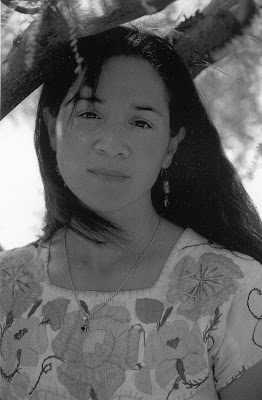
I chose this title thinking of the Latin root of the word conspire, meaning to breathe together. To come together, to be close enough to share the necessary, the intimate. This week's column is an interview with Margo Tamez, and next week I'll review her two books, Naked Wanting and the just released, Raven Eye.
Margo Tamez was born in Austin, Texas in 1962. Her parents, Eloisa Garcia Tamez (Lipan- Apache & Spanish Land Grant, Calaboz, Texas) and Luis Carrasco Tamez, Jr. (Jumano- Apache, Spanish) were born and raised in the Rio Grande Valley, married, and moved to urban areas to follow education and career pursuits.
Raised in San Antonio, Texas during the Civil Rights Movement and growing up during the Vietnam era made lasting impacts on Tamez' sensitivity and responses to racism, inequity, and social justice. Her parents were challenged to find community in an urban environment that pressed its hostilities, intolerance and injustices upon non-white groups. At the age of seven, she received advice from her mother to use the education of dominant culture in order to find ways to voice the people's struggles.
Margo Tamez is connected through blood on her mother's side to Lipan-Apache--Basque land grant communities of Calaboz, South Texas (formerly Nuevo Santander, and always Apacheria--the place where the Lipan pray, Tama ho' lipam). On her father's side, she is related by blood to the Carrasco's of the Jumano Apache of West Texas. She is an activist, currently residing in Pullman, Washington. Her current work focuses on autonomous indigenous women's activism and organizing against militarism, corporate polluters, and the violence of capitalism specific to the Sonora-Arizona corridor of the Mexico-U.S. International Boundary region.
xxxxxxxxxxxxxxxxxxxxxxxxxxxxxx
1. Vivian Delgado's Book, "You're Not Indian, You're Not Mexican" dealt with her own Yaqui identity, as well as discussed other indigenous identities, and the ways in which dominant culture continues to determine for us who we are, where we belong. What's your reaction to the title, its meaning for you? How would your describe your connection to Mexican/Chicano identity as Ejido Apache? What river are we the branches of?Delgado’s title is a powerful call and steering our attention to the centrality of race in the colonial, imperial and capitalist relationships of dominance and power between Euro-Americans (of both U.S. and Mexico) and indigenous people. For many indigenous and indigenous-mixed race (
indigena-
mestiza) people of the
IB, (International Boundary) that term has always been full of conflict. My mother and father, if made to choose whether they identified more as a “Mexican” or “American” would reply they were neither and both. Meaning, our people were in our lands before either of those terms became fused with social and political meanings.
At the same time, if they HAD to choose, they’d rather be under the more familiar umbrella of ‘
mejicano’ (emphasis on lower case, which means loosely that
mejicanismo is more of a cultural and social relationship, than a ‘Nation’). A way to be organized socially with other similar indigenous groups throughout the South Texas and Northern
Tamaulipas region.
Her book title also tells of the in between place that many indigenous of the
IB region have had to deal with through numerous waves of colonization. Being in ‘borderlands’ (a term which I think we need to radically revision because of how much its been
coopted by the Liberals, the literary presses, and globalization of ‘the border’ i.e. a place where the global north can rape and plunder indigenous people for pleasure and get a taste of the exotic [i.e. vacation] for the weekend…) automatically defies any notion of a fixed identity.
For example, our traditional lands, throughout different times in history, extended from Chihuahua to
Tamaulipas (ta ma ho lip am—the place where the
Lipan pray)…from South Texas to north-eastern Arizona. Our people, as my grandfather,
José Emiliano García used to say “don’t recognize that fence…that is a political border, not a cultural border” in other words, we don’t recognize the borders of nation-states and empires. Indigenous people from where we are from were forced into ideologies and colonizations which
deprivated us from our livelihoods, our communal ways, our earth-democracy relationships—and imposed patriarchal democracy, hierarchy, racism, sexism, dominance, power over, militarism, tourism, exploitation, sexual violence and death.
At the same time, “you’re not Indian, you’re not Mexican” also means that dominant society, especially in the ‘borderlands’ have a narrative that privileges their story of ‘how the West [‘Congo’ in the case of South Texas and Northern Mexico are concerned] was ‘won.’ In 1847 Texas abolished all Indians from their space. Does that mean suddenly, overnight, there were no more indigenous people in this space the settler society was now calling “Texas?” Not quite. That's an illusion upon which Texas’ narratives of racist heroism are based. Mythologies and mass delusion of a plantation-based society on the verge of building a southern empire.
Some got removed to “Indian Country” (as if there is just one and that it contains one kind of Indian). The majority were re-categorized in the labor-economy which required their bodies for capital and profit. Texas was a slave nation, an apartheid nation and a Jim Crow nation. Pure white space as manifest destiny was an ideology, a tool and a weapon which empowered white setter society to rationalize the violent oppression of ‘child-like’ ‘savages’. Naturalized as the laborers and domestic caretakers of the privileged. The invisible. The vanished. The indigenous people throughout Texas and its bordering northern Mexican states of
Tamaulipas,
Nuevo Leon,
Coahuila, and Chihuahua were caught between the nation-building of Mexico as it legally extinguished indigenous identities and blended us into its multicultural project of
mestizaje-Mexico.
We also had to deal with violent physical and cultural genocides which rejected indigenous people from participation on any meaningful level in the construction of ‘democracy.’ Today, many communities, my own communities of
Lipan Apache and Basque people who live along the
camino militar as well as my relatives in West Texas, the
Jumano Apache, both
binational communities cut off from or lands on the Mexico side for three generations, still resist and contest the forced ‘either/or’ dichotomies, the illusion of choice, which is not about choice, rather, that is about being paved over.
Most of my relatives still can tell of the violence, the killings, the lynchings, the shootings, and the forced containment of indigenous people, of many tribes and customs, into barrios, pueblos,
colonias,
ejidos… When a plantation state abolishes ‘
indian-
ness’ it drives indigenous people underground. I’m talking an authoritarian and militarized political machinery at work here, that my people, in few numbers,
survivied. I am proud that I came from rebellious indigenous people on both sides of my family, and that we are still on the International Boundary, fighting both nation-states, U.S. and Mexico, who both have used, abused, exploited and abandoned us as the indigenous people of this hyper-militarized part of the North American continent.
2.
Poetry can be prayerful in that many times the message and the means have a spiritual base. Does that resonate for you in regards to your own writing--i.e. subject matter, process? If so, how is this different from notion of poet as shaman? Or is it a manifestation of a kind of spiritual outreach?
I don’t like the term ‘shaman’... Shaman, the word, for me, feels like posers and new
agers in
Sedona and Flagstaff, San Miguel
de Allende, Austin, Scottsdale, and Santa Fe.
For me, the spiritual aspects of ‘words’, of ‘language’ is deeply rooted in memory, in the body’s memory and story, in connection to pain of the heart and pain of the body at convergence. My mother’s breath as she flipped tortillas on the
comal, the timing of her wrist flipping the tortilla and the first bite of the hot bread with butter spilling down my wrist and arm as I devoured them hungrily. The words and the bread, the drop of sweat suspended from her brown cheek in the hot kitchen, satisfied, her stories of a white man called ‘racism’ and ‘sexism’ and ‘oppression’, and
disappointment, lots of
disappointment and rage. That is what I learned to pray and make devotion to as a child—my mother’s stories, and simultaneously, to be a listener to be a witness to be present.
I was taught to be still and to listen to elders speaking and to watch, not ask for instructions, but to watch and learn by listening with the body, all of the body, which also means the heart and mind
unseparated from body. Those separations those
fragmentations and divisions are learned from the Science of dominant culture, from public schools and Christianity and judgement—the doom society, the blame society, the death society, which only justifies itself through killing as regeneration.
My mother’s religion was warmth, food, story, and stress as well, as she was conscripted into the force of
assimiliation and cultural genocide and tried hard to keep its clutches from snaring her kids, though that was her lifelong devotion, it was wrought with turbulence, violence, and bitterness.
I was really quiet as a child and as a teenager and into my 20’s and 30’s. (A lot of my friends now would not believe that…I’
ve changed!) However, it is the truth. I was actually mute for almost a whole year when I started high school, as I’d been traumatized by being raped when I was 15 by a white guy on a golf course in San Antonio, and not being equipped to deal with that at all. If I had accused him, I’d have been the one to ‘get it.’ My past experience with trying to get ‘justice’ when it came to holding white males accountable for their sexual violence was a dead end. I wear the physical scars on my body to ‘prove’—body as Science, as citizen Science—to no avail.
So, by the time I was 15, after numerous
violences, I think my mind just shut down, went on a deep sleep. In my early twenties, in a college classroom, I still remember how difficult it was to retrain my mouth to stay up with my mind. The muscles in my jaws and my tongue lost their memory for how to make words. It was frightening to lose so much power and to try to put the voice and the self back together as a jigsaw. There were numerous ‘pieces’ that just never got back, that were ‘lost’ forever. I think I spent my late 30’s doing so much recovery and acceptance that there are just some ‘pieces’ in sexual violence that we have to just let go to the void. Sometimes things reappear in
dreamtime. Sometimes the ancestors bring me small memories that help to patch those really difficult memories that sear the skin.
So, poetry for me is and always has to be connected to the material. I spent too much time in ‘poetry workshops’ and was violated by the student loan indentured slave system for too long [paying for my MFA] to allow what I write to be relegated to ‘poetry for poetry’s sake’. What is that? There’s no oxygen for that, period. I come from the most
hypermilitarized spaces in the North American continent, outside of
Chiapas. Poetry has to be connected on the ground to communities, period.
My
homeplaces ARE the industrial metropolises. The metropolises with skyscrapers benefit directly and are privileged in direct connection to the deprivations experienced in the industrial metropolises of the Mexico-U.S. border and the
Guatamala-Mexico border. Period. Poetry created in a vacuum apart from lived experiences (not appropriated ones) needs to be challenged in a serious way in contemporary college writing programs.
What is not connected to witnessing and disrupting the violence perpetrated upon our communities is oppressing us. Poetry workshops have to get grounded in
historicizing instead of
ahistoricizing the privileges of the elites. A $50,000 graduate degree in creative writing that focuses primarily on ‘literature’ of white writers is another form of white supremacy and white violence against writers of color. $50,000 in student loans is a serious chattel and
de-capitalizes writers of color. If the majority of the
literatures that a writer of color gets exposed to in that 3-4 years are Euro-American ‘canons’ which
exceptionalize ‘American’ and/or U.S. writers, with just a few ‘multicultural’ writers sprinkled into the pot, then we have to seriously challenge the system which reproduces colonial power relationships within that context.
3.
What have been the major challenges/triumphs in being an indigenous woman in academia? How do you see your position relating back to home, to your community?‘Academia’ begin in first grade when I was punched in the stomach by a white boy who called me ‘dirty
mexican’ and a ‘prairie nigger’ after having surgery for appendicitis. The scar on my forehead, an arrow pointing up, is the result of 3 white boys who took their ‘curiosity’ out on me when I was in second grade, with rocks hidden beneath mud, thrown at my face after they backed me into a corner.
My ‘position’ on the academy is that it is not a revolutionary space, nor necessarily a
liberatory space. Having said that, and after nearly four stints in the academy, I still believe that colleges and universities are spaces from where
liberatory and revolutionary ideas, resistances, and movements can be launched in solidarity with and in support of community-based movements, and that the local and global social justice movements, in all their complexities, need a very diverse membership. I think we need to work more diligently to not be overwhelmed by the fragmentation and isolation that the university imposes upon us daily. The institution of higher ed is more and more a crucial site of the industrial assembly line, churning out products and markets.
Privatization of scholars of color, indigenous scholars, is an ongoing site of struggle. Indigenous scholars who are women, doing anti-racist, anti-heterosexism, anti-capitalism, and anti-militarization from within an academic space are going to meet with attempts to silence, side-track, repress their voices. They’ll be dangled like a charm on a ‘diversity’ bracelet, and simultaneously underfunded,
defunded, and refused entry into sectors which are necessary pathways for indigenous people’s ongoing disruption of state and colonial oppression of our people, lands, communities and livelihoods. My position in relation to my home, my community and the academy is that I’m here to do the work my communities assigned and asked to me to do in the ongoing struggle against U.S. empire.
I’m a person raised traditionally on the concepts of community and service. Both my parents struggled to maintain those ideas, to keep them alive, and at the same time they were conscripted violently by patriarchy, capitalism, assimilation and empire to become ‘individuals’ in ‘democracy’ for ‘freedom.’ That wanted to make them, force them into “Mexican-Americans,” “Hispanics”, because of our last name and because we spoke Spanish as well as other languages that were considered ‘abolished’ according to the script of white supremacy in Texas. Assimilation and acculturation haven’t gotten our people very far; in fact, those are dead ends for us. Indigenous people in the bordered lands are regrouping, reorganizing,
retribalizing, and staging resistance to those forces (of dominant culture, of blocs and regimes that want to border off only specific ‘types’ of ‘authentic’ ‘natives’ in service to colonialism and racism. Therefore, one thing that my work here is focused on is positioning indigenous women as their own voices at the center of public policy because we are local people with ancient ties to the region and diverse communities.
4.
The title of your newest book, Raven Eye, is evocative of the raven's role in sacred practice. Would you comment on that? How does the title reflect the book's theme as a whole? Can you talk about raven symbolism here?Raven Eye is a convergence about an old story of Raven and how he helped to create the first man and first woman, as well as the ongoing story of contradictions for indigenous people in a hyper-globalized world that seeks to open all restrictions and borders for the flow of capital, as it restricts and forcibly imprisons the flow of indigenous migrations for economic purposes as a direct result of
capitalism's violence throughout the North American continent.
Raven Eye is an intersection of past, present, and future, and of witnessing
violences unspeakable. This says there is no easy ‘out’, sorry. You don’t get that, not here. I had a raven feather fan that came to me on a highway in Nevada back in 1990. I prayed to the raven who left, to his life taken on that highway by a trucker is my responsibility too. I’m not outside the violence that hyper-consumption brings to the innocent. I’m driving. My car uses gasoline, and rubber tires. My clothes have tags on them from Bangladesh, Juarez, Malaysia….
Raven Eye is an attempt to make a bridge, to bring intimate and close together the implicit intimacy of colonialism, racism, sexism, capitalism and empire. The boy in the book, based on my son Hawk, is seeing, though he is mute [a piece of me there too, though Hawk was mute as well, from violence perpetrated against him, as you see in the book; [he was mute until the age of 4]. Muteness is like swallowing back grief for Raven, who as we must know is a talker, a communicator, a joker, a social being who brings connection and relationships. In the beginning of the book, Raven is tumbling and falling and crashing to the ground, so from the get-go, this is not the usual ‘native
american storytelling’ stereotype caricature that an audience will crave in these very disturbing times. The fact that people still crave the Indian to ‘be
indian’, ‘play
indian’, is like ‘play dead’ for me. That’s what my ears and body ‘hear.’ In any case, yeah, Raven the boy in the book is in a bad way, yet he’s gotten that way through a process of colonialism. That can’t be stripped out of this narrative. That cannot be hygienically cleansed and purged out. This is a story that kept me in the courts for four years of my life, with my kids and I in relocation and Diaspora. This story of Raven’s, Corn Girls [Hawk’s and
Milpa’s] survival from domestic violence and molestation had to be told to the ‘court of the public.’ Especially when the good ole boy court system in Pinal County [southern Arizona] basically attempted to silence this and rescript my testimony as a watered down ‘custody dispute.’ Rule of law and property are mostly what concerns the court when it comes to women and children. Raven Eye shows interlocking systems of oppression and injustice in intimate ways and is meant to jar and disturb with scripts of ‘reality.’
5.
How would you describe the way dominant culture's tendency to romanticize the natural world and the female body/female experience are related? What comes to mind is the tendencies to view the earth has having magical powers of regeneration without stewardship, and the view particularly of women of color, of Earth Mother, able to stoically absorb abuse. How does the writing in Naked Wanting comment on that?Well, you know, there is a large canon and tradition in the academy to dwell on legitimizing the separation of ‘nature’ and ‘human’, as well as the reunification of ‘nature’ and ‘human’ by idolizing and fetishizing indigenous people’s inherent relationship with earth and earth-democracy. I use Bill Cronon’s first line in one of his essay’s … “I have a problem with wilderness…and that is that every ‘wilderness’ is also a war ground and is a site of violence for indigenous people. For every trail in a wilderness park, there are thousands of indigenous people who were slaughtered and mutilated –in the not so distant ‘past.’ “Nature’ renditions of ‘native’ literature produced by non-indigneous people have dominated the globalization and consumption of ‘noble’ Indians, and indigenous women in disrespectful and as flat caricatures who are submissive and placid, complacent non-actors in their own destiny. Many of the national parks in the U.S. and Mexico still promote this kind of propoganda. The ongoing racist ‘multicultural’ projects abound—scripts of dominance and cultural genocide. For me,
Naked Wanting was a site of struggle to defy, to contest and to talk back to the canon and genre of ‘nature writing’ from an indigenous perspective in the Mexico-U.S. bordered spaces of Southern Arizona.
However, the press wanted a ‘nature and environment’ way to market this collection, and wrote numerous errata on the back cover to shape and fix the poetry into a consumable niche. Unfortunately, this causes great problems when trying to discuss the primary topic of this collection—decolonization, patriarchy, sexism, oppressive ‘traditionalism’ and indigenism, miscarriage related to DDT and Toxaphene, indigenous women’s labor and reproduction as sites of many colonization projects’ erased histories…
So, what I decided to do was to insert this disclaimer within each book of
Naked Wanting that I own and distribute at readings:
“Tamez reflects on gendered, raced, and classed environments, dwelling on touch, disturbing the idealization of the 'Native' 'mother' by foregrounding female production and reproduction through hand labor and incremental debt, de-fetishized childbirth and indigenous women’s isolation in border(ed) lands, raising children in poverty at the rural fringes of a small, desert, cow-town, and its juxtaposition at the borders of encroaching soon-to-be-sprawled McMansions.
Her lense tightly frames the direct links between miscarriages among indigenous women in the Mexico-U.S. borderlands and environmental racism, when damage inflicted on the environment by herbicides comes back to haunt us all at the level of women's reproduction. These are the bombs ticking within these astute and subtle lyrical narratives rendering the pierce of "the chemical cocktail seeping into the air ducts."
Tamez speaks as someone who has experienced the female reproductive body, literally re-structured by chemical invasions in air, water, soil and food, exposes the consequences and implications when our land and water are compromised.
For Margo Tamez, earth, food, and community are the essentials of life, our deepest wants, our human 'rights'. She brings all of them together in these cautionary and lyrical poems that inspire us to move through compassion and, more concretely, to actions for a more sure footing on earth.
This is intervention.
6.
What is the legacy you want to leave your children? What would you like to say about yourself when you stand at the table of your ancestors?
I want to leave my children a firmer standing in their traditional communities of the Jumano and Lipan Apache survivors of the bordered lands than I had. I want to leave them tools to resist and to sustain connection to the elders, to ceremonies, to seed saving, to planting and harvesting, to building and rebuilding community, to building bridges—not walls!
When I see my ancestors … I hope they’ll all welcome me with songs, smiles, dance, and finally, safety.
7. What's something not in the offical bio?I'm bound up in indigenous time . . . and the time of machines, guns, nanotechnology warfare. Our lands are bound up in barbwire, virtual fencing, detention centers. There is scant time for rest, nor waiting. We need to work in a clear manner, with ears for those most marginalized--who are not ourselves and whose alleviation of suffering will soothe our sleep and return us to dreams not filled with screams of women and children's slaughter, rape, mutilation and further deprivations. My friend Jody Pepion (Blackfeet) says this is not a time for 'me, myself, and I' -- the assimilated self. This I am in agreement with and I am locating that in everything I do. Tell me what materials you value, the things you strive for and I will tell you who you work for, to whom you are in service, and which project (colonial...de-colonial) your lifework is benefiting.
gonya'a' golkizhzhi' (it has come a colorful place)
xxxxxxxxxxxxxxxxxxxxxxxxxxxxxxxxxx
The National Hispanic Cultural Center continues to celebrate literacy, the book, and the joy of reading...and I'm lucky enough to be a part of the following event:
Semana Literaria April 20th – April 27th
Friday April 20th
Book Fair in Celebration of World Book Day - ABQ Civic Center, 10am-2pm Demonstrations, book signings, author’s lectures, food and music. Presented by the City of Albuquerque.
Monday April 23rd
Día del Libro - NHCC Salón Ortega 1pm
Cuéntame un Cuento, presented by the UNM Spanish Resource Center
6:30 pm Readings from Inspired Books, Lisa Alvarado, author of Sister Chicas/and others. Presented by the NHCC History & Literary Arts Program.
Tuesday April 24th
Voces Poéticas – NHCC Bank of America Theatre
9 am Voces Poéticas. Poetry contest elementary grades 1-5
Presented by the UNM CLARO, Instituto Cervantes, Pan American Round Table and the UNM Department of Spanish and Portuguese.
Wednesday, April 25th
Traditional New Mexican Agricultural Culture – NHCC Wells Fargo Auditorium
6:30 pm Estevan Arellano author of Ancient Agriculture: Roots and Application of Sustainable Farming, Sylvia Rodriguez author of Acequia: Water-Sharing, Sanctity, and Place and Brendaleigh Lobato director and producer of Las Huellas de Mis Antepasados – a documentary on northern New Mexican village, Los Hueros. Presented by the NHCC History & Literary Arts Program.
Thursday, April 26th
Cantemos al Alba: Origins of Songs, Sound and Liturgical Drama of Spanish New Mexico. Lecture and Book Presentation – NHCC Salón Ortega
7 pm Tomás Lozano and Rubén Cobos discuss Lozano’s book on New Mexico’s Spanish oral and literary traditions. Presented by the Instituto Cervantes.
Friday, April 27th
Book Printing Demonstration and Exhibit –
1pm Center for the Book, ABQ Special Collections Library

Lisa Alvarado
 Someone once told me that I was restricting myself as a storyteller. I don’t believe I am.
Someone once told me that I was restricting myself as a storyteller. I don’t believe I am.



















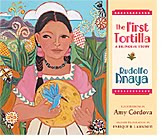



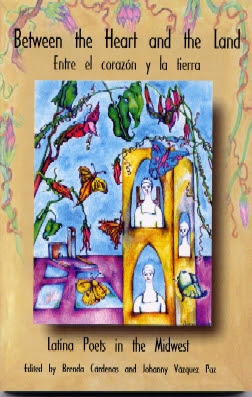

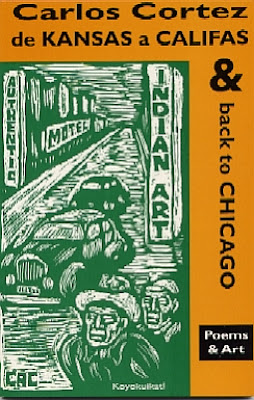
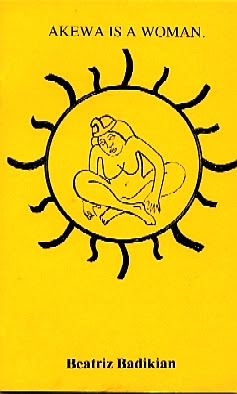
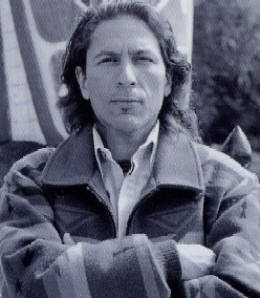





Mil gracias, Lisa! It's an honor for me to be featured on La Bloga, one of my favorite blogs of all time.